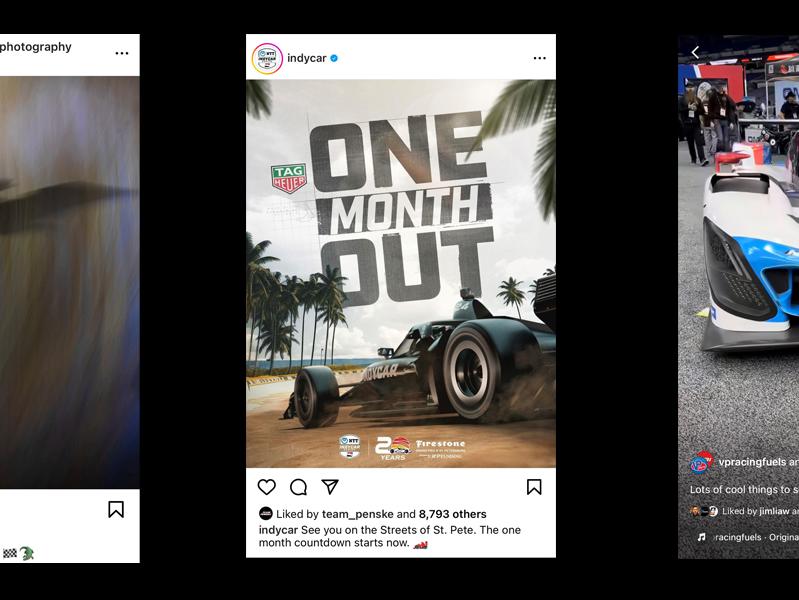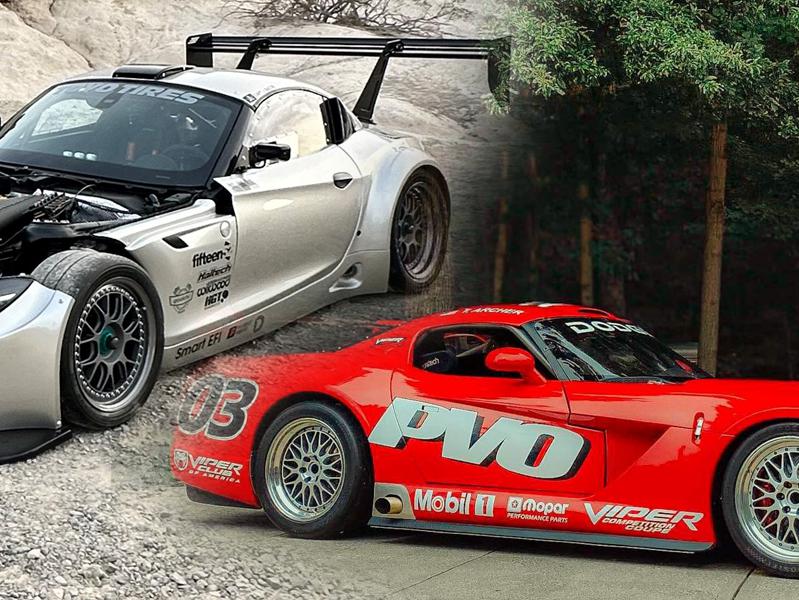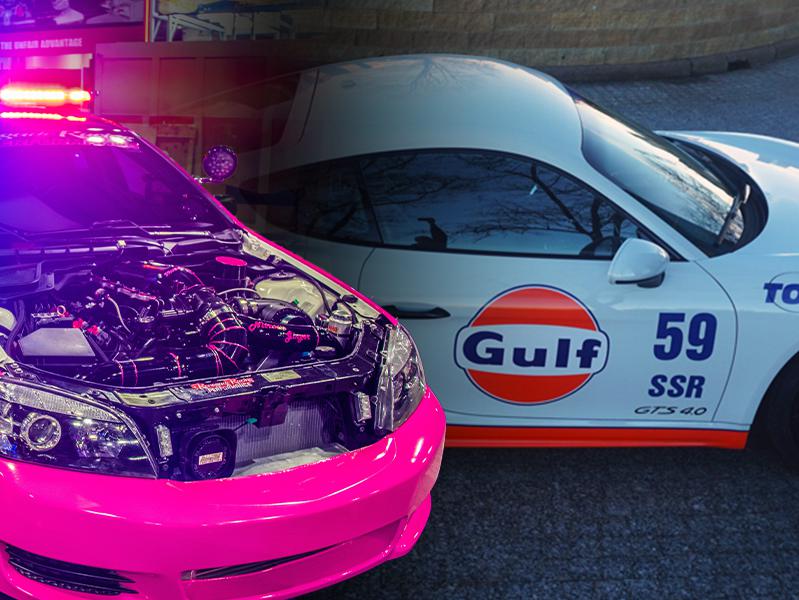Industry Insights: CJ Olivares
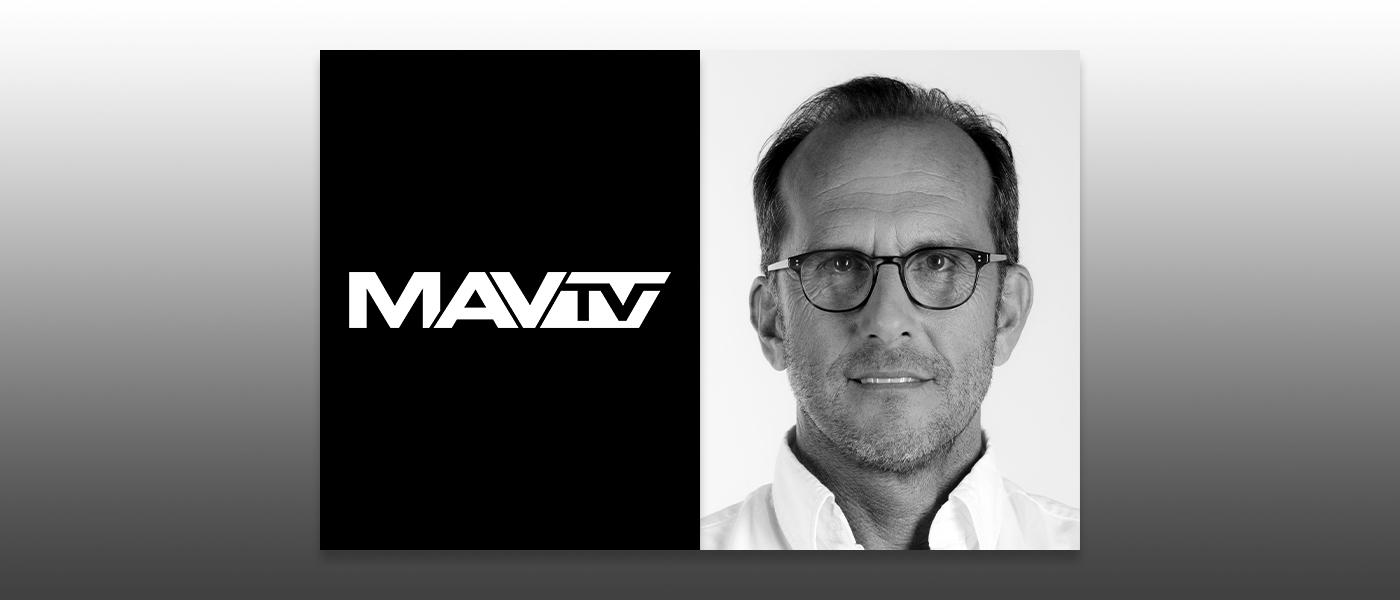
CJ Olivares is guiding the MAVTV platform to be motorsports enthusiasts’ first choice when viewing events, which gives them more options and control about what they are going to watch and which device they use.
Among the biggest challenges for any racing series is figuring out how to reach the largest potential fan base. At the track and series level, getting fans through the gates and into the seats is both a measure of success and a means of funding the operation. In the modern era, that means having a smart media strategy that includes putting the racing product on screen as well as generating organic social media and traditional advertising.
Television channels devoted to racing have been pivotal in creating new fans, and now streaming channels are adding to the array of options to bring new fans to the sport. Among the heavy hitting media channels is MAVTV, which is owned by Lucas Oil and exclusively carries motorsports and automotive programming. MAVTV carries coverage of a long list of motorsports, including dirt late model, Trans Am series, MotoAmerica, Formula DRIFT, and other related programming.
The man selected by Lucas to run the show is CJ Olivares, who brings impressive career history and credentials to the project. In December 2023, he relaunched MAVTV with a range of new platforms and distribution agreements. We caught up with him recently for a discussion of how the TV and streaming business works, and what it can mean for a racing series.
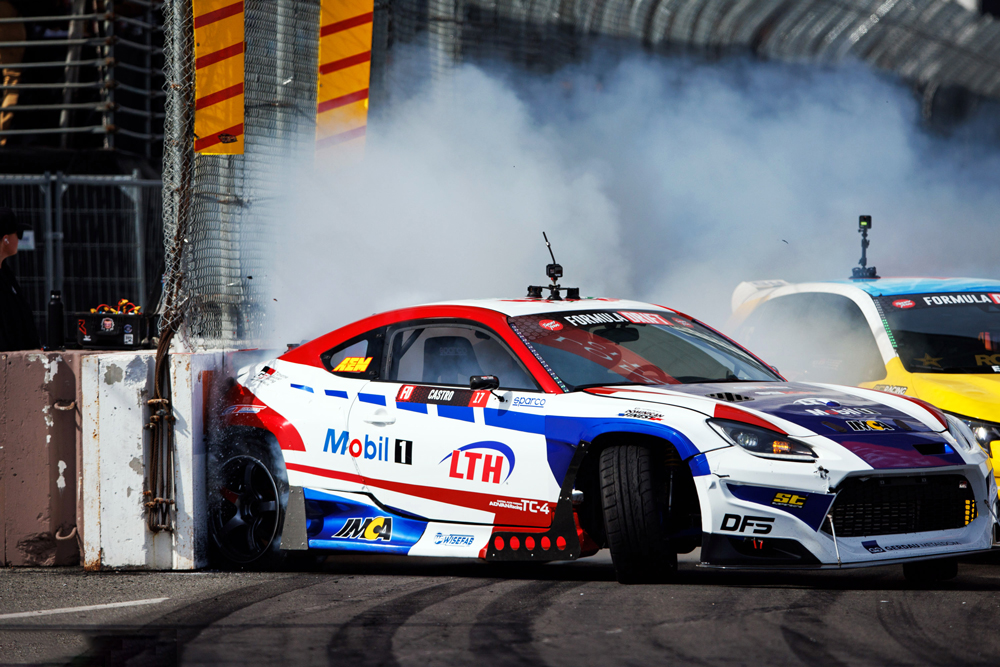
PRI: Tell us a bit about yourself. How did you get to MAVTV?
Olivares: I’ve been at MAV a little over a year now. I joined full time in September of 2022, but I’ve been in sports media my whole life and in sports television for 30-plus years. I started as a print journalist and photographer in the endurance sports world, and then I was at Fox Sports for 15 years on the programming production side. That led to an opportunity to create and run a network called Fuel TV that focused on the action sports, surf, skate, and snow. What attracted me to MAVTV is that I saw a couple of dynamics at work in the motorsports space.
What I saw in the landscape a year-and-a-half ago was that after SPEED went away, there was no mass media property that really stepped into that void at the intersection of motorsports and auto enthusiasm. I looked at what was happening and realized that there are so many subcultures within motorsports, of different types of racing. Whether it’s four-wheel, two-wheel on dirt or pavement, domestic or international, they don’t have one place to go from a video perspective. And I thought, ‘You know what, if not us, then who?’
PRI: MAVTV had its own history as well, before focusing on motorsports. Did that concern you?
Olivares: When it launched in 2006, MAVTV was what I lovingly refer to as ‘Bro TV.’ It was bikini contests and cage fighting and some motorsports and action films. But as the world and culture evolved, it ran into some challenges. Lucas Oil purchased the channel based on the fact that they were supplying virtually all of the motorsports programming, and they repositioned it as more family friendly. They made it more grounded in who the Lucas family is and what Lucas Oil is, which is really the heartland of America. Just good, honest, hardworking people, and they really focused on that. Then almost seven years ago, they pivoted to motorsports exclusively.
PRI: What does being on MAVTV offer to a series or a track or anybody who’s considering involvement? What is your sales pitch for the channel?
Olivares: That they can be part of re-establishing the new home for motorsports on television. Very candidly, that’s our aim. We want to be the campfire around which anybody in the motorsports community can come hang out, watch great racing, share stories, and learn and become inspired. I think we have arguably the only race-centric cable television network in the United States, and by the time this interview comes out, we will have launched Amazon FreeVee, adding that to our free FAST channel offering. And we are now available directly on smart televisions and Roku-type devices.
Our traditional cable TV channel is holding ground in terms of households in the United States. The television universe has shrunk 30% over the last decade. It’s continuing to shrink with all of these other opportunities and ways that you can consume. The good news for us is, while the rest of the market has been shrinking, we’ve been holding ground. Then our FAST channel has experienced some pretty explosive growth. With the launch on FreeVee, we will be north of 300 million devices globally, and 90% of that is in the US. We’re on effectively every major streaming service platform and/or device. So from a distribution perspective, we also offer these race series a couple of different opportunities, whether it’s the pay TV cable side or the free TV side to get live and delayed or highlight programming out to an audience.
Another thing that we’ve worked really hard on this last year is being a good partner to the series, trying to find ways that we can collaborate and work together to amplify their ability to sell sponsorships, to promote their races, to get people going back to the butts-in-seats. Depending on what series you’re talking about, it’s either the series or a track promoter who are the ones who are taking the risk on getting people out to the races.
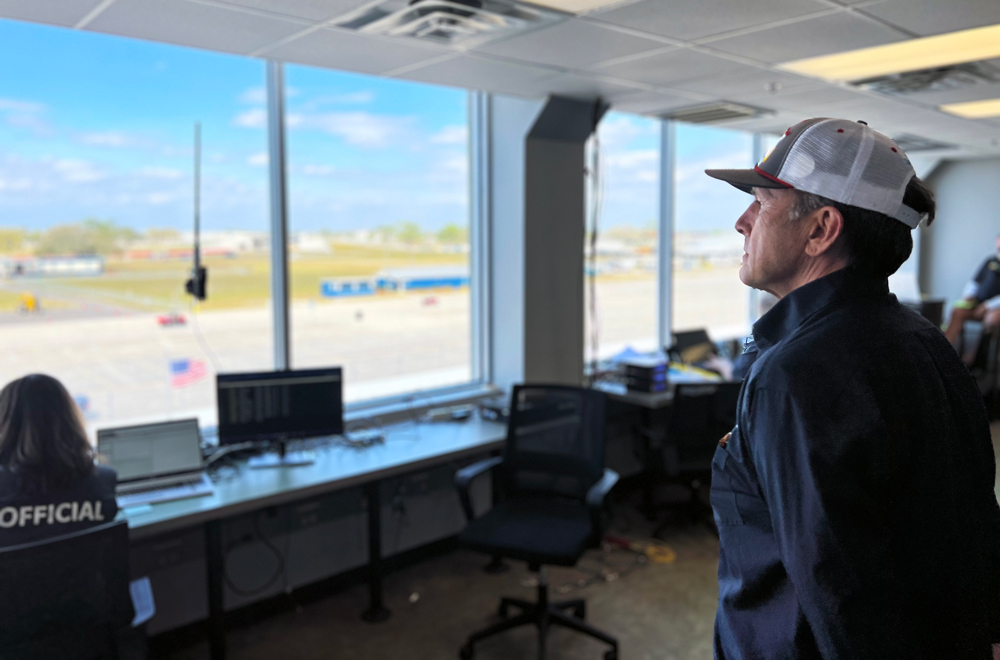
PRI: How does the money flow—from MAVTV to the series or from the series to MAVTV?
Olivares: That’s a great question and there’s not a single answer. A lot of it depends on the size and scale and scope of the series. Not all series are the same. We know NASCAR, Formula 1, IndyCar, and NHRA all have their broadcast partnerships. They’re awesome, amazing, hundreds of millions, if not billions of dollars. In the case of NASCAR recently, there are huge rights fee deals. So we’re chasing everything else in some of the bigger properties like MotoAmerica. We had an existing highlight relationship that we expanded to get live races this year. Trans Am is a great example of a property that really didn’t have a home. We started last year showing highlights and primetime on Thursday nights the week after a race. By the end of the season, we were experimenting with going live. This season we’re going to go live with both TA and TA2 all season long.
With smaller series, we start with the audience history. Has this series been able to draw attention? Has it had any live viewing before? What’s the quality of the live production? Is it drawing an audience? Is it a good live product for us, or is it a challenging live product for us? For example, one of the things we found was that the Lucas Oil Late Model Dirt Series is a really challenging series for us to go live with. It’s a great highlight show for us, but because they’re running at night in the Midwest in the summer, you get a lot of rain and a lot of delays for track prep. That impacts the quality of the experience, so we really look at that.
We also look at the sponsorship complexion: who’s spending, how much are they spending? Is there an opportunity for them to spend some money in support of this? We try to be realistic about the ecosystem, and once you get out of those tier-one race series, it’s challenging.
PRI: What do you need to see from a small series to even consider televising them?
Olivares: First, how long have they been running? If there’s a series that’s underexposed but has consistently delivered a really entertaining race product, that can be a great show. Then we try to find a place to fit it into the system. Sometimes that means going directly to our pay TV side, and sometimes it means going to the free TV side.
PRI: Will new technology help more series to get on your channels?
Olivares: One of the other things that we’re preparing to launch is a new video viewing app. We had an epic fail in 2022 with the MAVTV Plus app. So we got out of that business, and now we’re looking at re-entering it. When we launch this app in a couple of months, that will give us yet another way to reach out to the fans in the community and serve them. Because as I said before, there are some properties that aren’t well suited to a rigid schedule of linear television. So if we can just say, ‘Hey, folks, we are going live with whatever short track race from wherever, tune in,’ there’s a little different standard if you’re watching that. If it’s streaming, then people are a little more forgiving, I think.
PRI: I want to dig into the money side of the program a bit more, since that’s a top concern of series promoters. Can you offer any more details?
Olivares: Again, there’s no single answer to any property. For example, our partners MotoAmerica have all of their classes and produce the feed. We pay a rights fee, and we get the feed. The quality of the feed is amazing. It’s got everything we need. Other folks come to us with a product that isn’t fully baked or has maybe been streamed previously and is not quite ready for broadcast. Maybe the quality of the cameras needs upgrading, or the reliability of the signal, maybe even the talent that they’re using to call the races on camera is not as experienced. We’ll work with talent directly to train them up, tune them up, and give them notes on how they can be more effective and more engaging. It is all of those things.
One of the ways that we look at the space is, we’re trying to elevate motorsports and bring more people in and create more fans, because ultimately that’s good for us. If it’s good for motorsports, it’s good for us. So if we can help different race series and different production companies refine their production within their budgets, we’ll do it.
It would be great to have 27 cameras and all these elaborate telemetries that you see in NASCAR and Formula 1 and all of that stuff, but most series can’t do that. The economics aren’t there for that. We ask, ‘What is the best product that we can produce from what they have?’ And we really try to work in partnership with people.
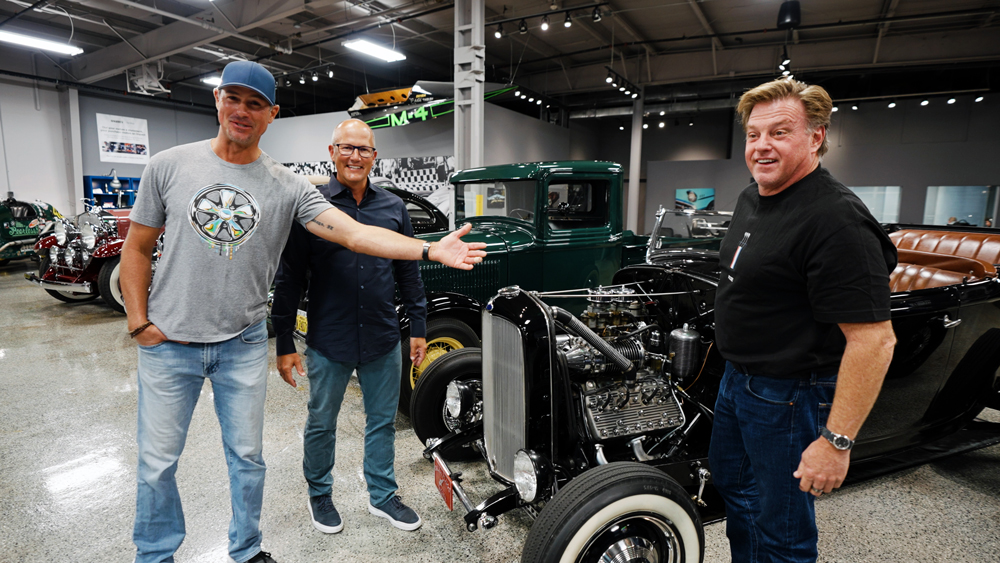
PRI: So you get the best product you can, and then you decide whether it goes onto to the free channel or the streaming or through the app or onto the cable channel, as it works out the best economically for everyone?
Olivares: Sometimes it goes on everything. Maybe it will go live on the cable channel, and then we’ll do highlights on the free channel, and then we’ll push out clips on social, and then it’ll go live on-demand through the app eventually.
PRI: Switching up for a moment, can you describe the relationship between MAVTV and FloRacing and FloSports?
Olivares: The easiest way to characterize it is that we have a content partnership. It originally included more than it does today. Originally it included Sprint 500, some Chili Bowl, also Shootout maybe, and then late model dirt. Now in 2024, it’s basically just late model dirt. We see them as a great partner, and I think they have a different business model than we do. The position that they have captured is really regional racing and heavy on the dirt track. So as I was referencing earlier about the challenges of late model, it’s a really great product for us on Monday nights.
PRI: What advice would you give to a promoter who has a series, and they want to grow their appeal, they want to grow their audience? What are one or two things that they can do to make their series more successful?
Olivares: I think part of it goes back to the fact that motorsports are entertainment. The drama and emotion that you get from watching and being a fan of sports and motorsports in particular is a rush. It’s dramatic, and it can be heart wrenching and joyful and all of the things, the spectrum of human emotion. It’s really about the fan experience from the time they turn into the parking lot until they’re pulling out.
Then try to be very deliberate about how you can translate that excitement of being someplace live into your race coverage, whether you are doing it or whether it’s in partnership with somebody. Invariably, the series operators and the owners and promoters know their own world inside out. What they have to figure out if they’re going to stream it or broadcast it is how to speak to your audience. You don’t want to speak down to existing fans who may be watching, but also you don’t want to speak over the potential new fans’ heads, so you take a little bit of extra time to explain the nuances.
PRI: Let’s talk about the future of motorsports programming. What is all this going to look like in five years or 10 years? Is it even possible to know?
Olivares: I think there’s a lot that we don’t know and can’t know, but I can tell you about what has evolved over time, and if you look at the last 15 years, it has been characterized by control really being in the hands of the viewer. You as a fan now have more choice and control about what you are going to watch and on what device you’re going to watch it. I think that trend is never going backwards. I was looking at VR goggles the other day, and somebody was talking about watching live racing via the VR goggles. If you’re in a Cup car with Kyle Larson and you see what he sees, and you turn your head and you see what’s out the side of the car, if you got Bubba Wallace coming up next to you.
It’s a hard thing to know in specifics what the future holds, but I really believe firmly that choice and control are going to continue to move into the hands of the fan. I think the quality of racing, the diversity of racing that you can watch live is going to increase. That’s certainly one of the things we’re trying to do.
 MEMBERSHIP LOGIN
MEMBERSHIP LOGIN JOIN PRI
JOIN PRI
